Big Money Prime Shakes Up Whiskey Off-Road
Canceled Fat Tire Crit creates opportunity for early KOM/QOM payout
If we were to create a "Monuments of Cycling Story Ideas," compiling the "Monuments of [your cycling discipline]" would be right up there with power rankings and tire choice think pieces. Not one to shy away from the classics, I spent a recent red-eye flight home from Arizona thinking about what events would make the "Monuments of Back-Country Mountain Biking." It was a red eye, and I was exhausted, so I didn't make it that far other than to conclude that the Whiskey Off-Road would be on that list.
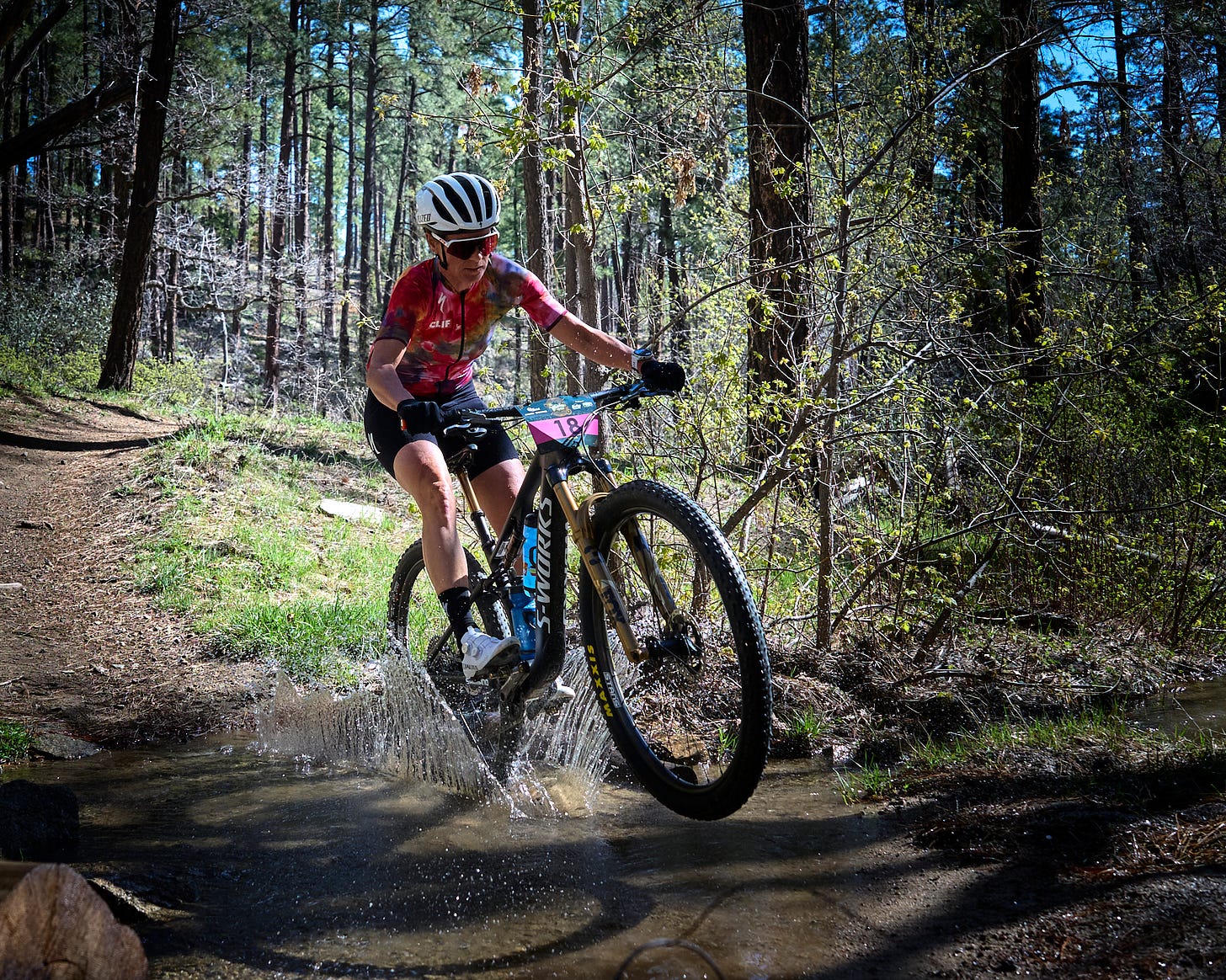
In its 19th year, the Whiskey Off-Road weekend, presented by Epic Rides, is an American classic. The trails in and around Prescott, Arizona, offer big climbs, beautiful vistas, flowy technical single track and ripping descents. Unlike some of the bigger gravel events out there, which tout the ability just to finish the darn thing as the accomplishment, Whiskey has close to a 95 percent success rate for entrants in the amateur fields. It's not easy, but it's doable. It's a race you can come to for the killer course and downtown festival atmosphere rather than something you just want to finish. The problem with "bucket list" races is that you don't necessarily want to return once you kick it. A race like Whiskey is one you wish to return to year after year.
For pro racers, the appeal of Whiskey is two-fold: a big-money cross-country endurance event that consistently delivers excellent racing and the Friday night Fat Tire Crit. The controlled chaos of the Fat Tire Crit gets me stoked to return to Prescott every year. And I know many pro racers feel the same way. On paper, racing a criterium on straight bar mountain bikes with competitors who don't spend a lot of time pack racing on the road seems a bit sketchy. But in the four or five editions of this race I've covered, I have never seen a crash in this race. And that record remains because this year's edition was canceled.
Friday, April 26, in Prescott was beautiful. It was a little cool but sunny and pleasant. However, if you looked at the radar, you could see a storm coming. It was not a big storm but a powerful one. If the weather forecasting algorithms had it right, this storm would hit downtown Prescott during the men's fat tire crit. The algorithm was a little off.
Instead, the temperature dropped about 20 degrees to somewhere in the 30s, and the rain started just before the women were supposed to line up for the start. It looked for a brief, optimistic moment that it might just skirt by with minimal precipitation. This meteorological prognostication was wishful thinking at best. It poured, it hailed, and organizers pushed back the race start, hoping the storm would quickly pass, but the intensity of the rain just continued to increase.
With several road sections of bricks, painted crosswalks, and high-speed turns on a screaming fast descent, the organizers made the sad but correct call to cancel the race. The conditions were not safe.
After the call was made, half the women's field, shivering under shop canopies, waiting out the storm, jumped on their bikes, braved the sideways rain and hail, and did a parade lap to thank the spectators lined up course side, hoping a race would somehow happen.
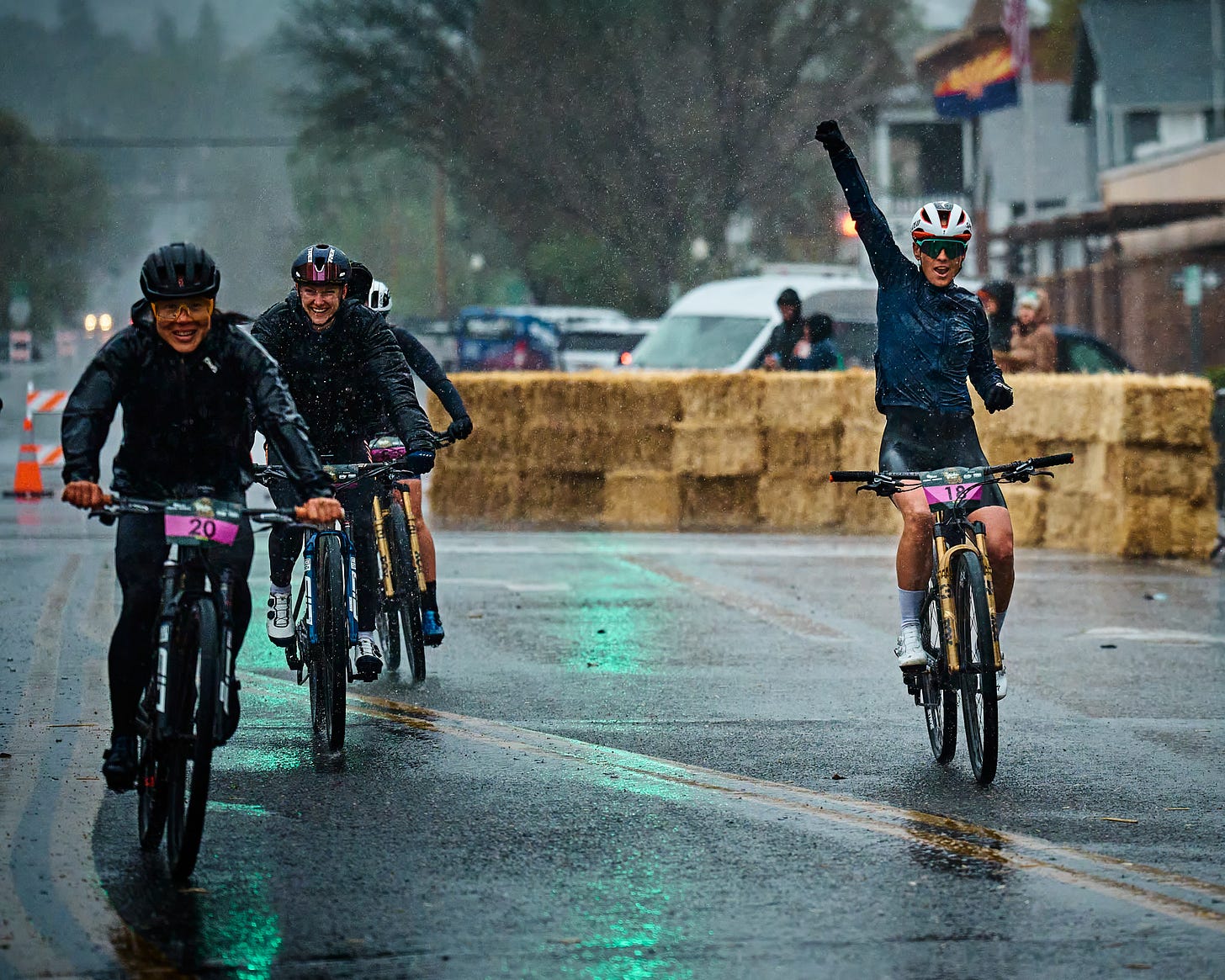
Thirty minutes after Epic Rides canceled the race, I exited the downtown Sprouts supermarket, still decked out in a full rain suit. To my surprise, and dismay, It was sunny and beautiful. Perfect racing conditions. But the ground was still wet, and course remained dangerous, so we would have to wait another year for the next edition of the best, dumb race in mountain biking.
The cancelation of the Fat Tire Crit meant that the race organizers had $2000 of unspent prize money burning a hole in their pockets. To get rid of it as fast as possible, they figuratively balled it into a chaos bomb and hurled it into the middle of the starting grid for the back-country race.
With over 6000 feet of climbing, technical singletrack, sick descents, and historically tight racing in the pro ranks, the 46.2-mile Whiskey back-country race is a beast. The start of the race is a 3.8-mile climb up Copper Basin Road. Although the start sector isn't a neutralized section, despite its police escort out of town and relatively mellow pace, racers historically treat it as one. A tight peloton of the men's field first, followed minutes later by the women's field, rolls out of town, gets acclimated to the race day, and chats with their fellow competitors. Some may put in some easy attacks, but nobody tries to do anything crazy until the singletrack starts at the top of the climb.
Once the road turns to dirt, you climb for about another mile and then take a hard left turn onto the single track. In years past, the real racing starts as this left turn pinch point gets close. You want to be in the top 10 or 15 entering the single track, or you'll play catch-up all day. That's the conventional race strategy.
2024 was unconventional. With that $2000 on the table, the Epic Rides brain trust came up with an idea: offer a $1000 prime to the first person in the men's and women's field to make it to the top of the climb just before the left-hand turn into the single track. The winner takes all. This changed everything.
The Whiskey payout is generous. The winner takes home $5000, and the top five take home over $12,000. The total purse is $30,000 and pays 12 deep in both fields. Fifth place pays $1000, which is important because it plays a part in this seemingly simple pre-race equation: do you have a better chance of beating the entire field up a climb at the beginning of the race, or do you believe you can land on the podium and will sit out the chase for the prime and save your matches for later.
Ultimately, the decision wasn't go hard or don't go hard. That decision was made by those who were going for the cash. The train was leaving the station at breakneck speed. If you didn't hitch your car to the engines up front, you were getting left behind.
Men's Field
Keegan Swenson and Tobin Ortenblad (Santa Cruz Bicycles, SRAM HtSQD) had a plan in the men's field. Similar to how Tobin helped Keegan destroy Leadville last year by keeping the pace painfully high in the first half of the race to soften up the field and keep Keegan safe, Ortenblad went to the front early, with Swenson on his wheel. If there's a finish line, even if it comes in the first ten miles of the race, Keegan wants to be over it first. This prime and $1000 carrot was not exception.
This super-domestique plan did not pan out how the Santa Cruz hit squad mapped it out. Ortenblad looked great for the opening miles, but once the steeper parts hit, he knew he couldn't lead Swenson to the top. Once Ortenblad dropped back[1], the prime contenders pounced, leaving Swenson to fight it out on his own.
The three strongest men sprinting to the Küat KOM/QOM sign just before the turn were Swenson, Cole Paton (Giant, Orange Seal, Shimano) and Toby Hassett (Bear National Team). Swenson and Paton were not a surprise; those two came into the race as favorites and had a whole race left to battle. Hassett was the outlier: a guy who decided to potentially blow up the rest of his race to go head-to-head with two of the fastest mountain bikers in the world.

It was the right call for Hassett, who outmuscled the veterans and beat them to the KOM line, taking the $1000. Mission accomplished, Hassett relaxed and began to recover, knowing he still had a lot of miles ahead.
Paton and Swenson did no such thing. They attacked the single track, sending alarms back to anyone else in the field who thought they might have a chance to contend for the podium or even a win.
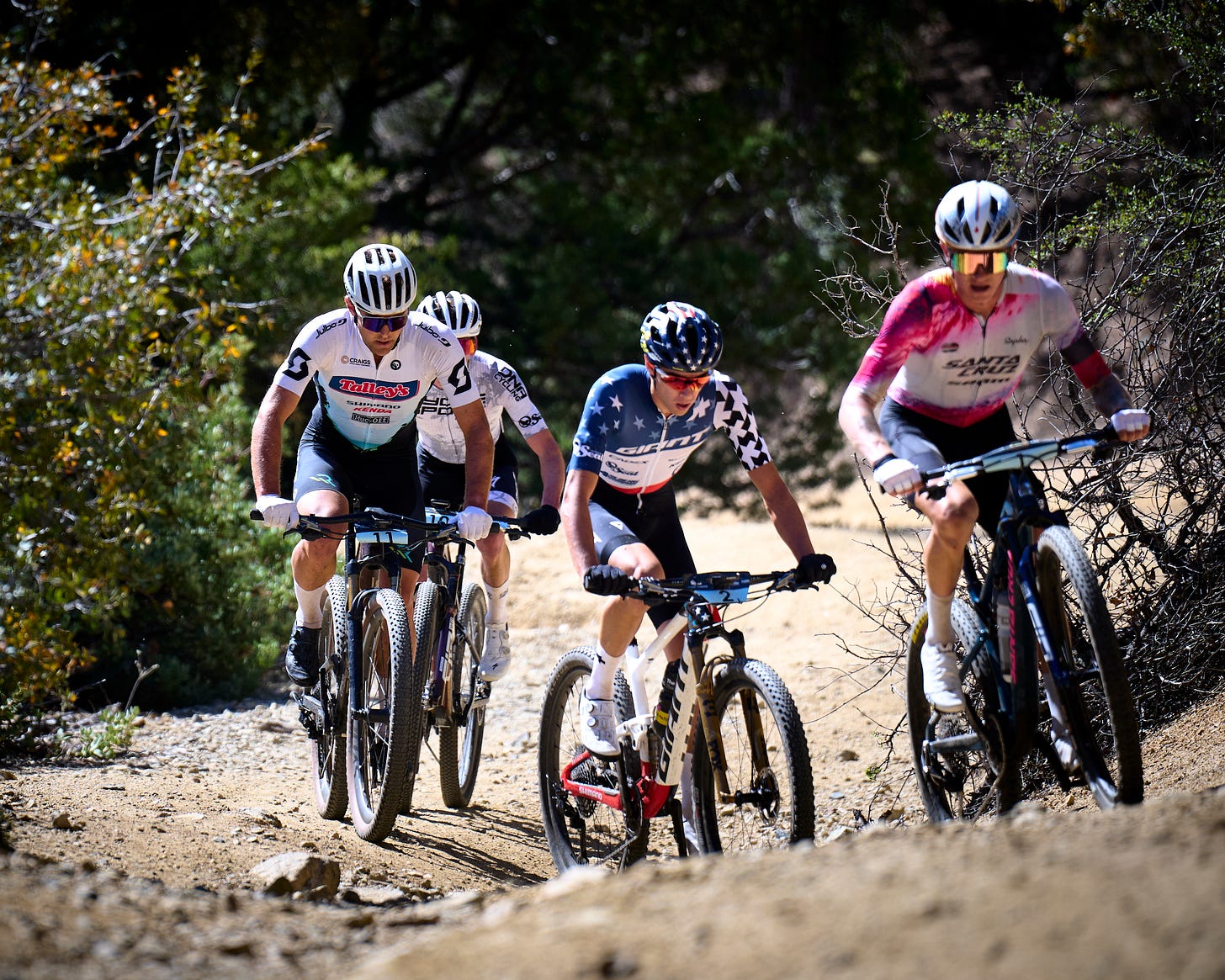
Alex Wild (Cyclesport.com) and Cameron Jones (Scott, Shimano, Kenda) were the two riders able to close the gap and join Swenson and Paton. That group of four stayed together until the climb back from Skull Valley. Swenson continued to keep the pace high. Jones was the first to fall off the pace, followed by Paton and Wild. Paton eventually reconnected with Swenson, and the two rode together for the final half of the race. But everyone, including Paton knew what was coming. Swenson attacked, gained an advantage, and rode it to the finish to take his fifth consecutive Whiskey Off-Road title. Paton finished second, Wild in third, Jones in fourth and Sean Fincham (Maxxis Factory Racing) in fifth.
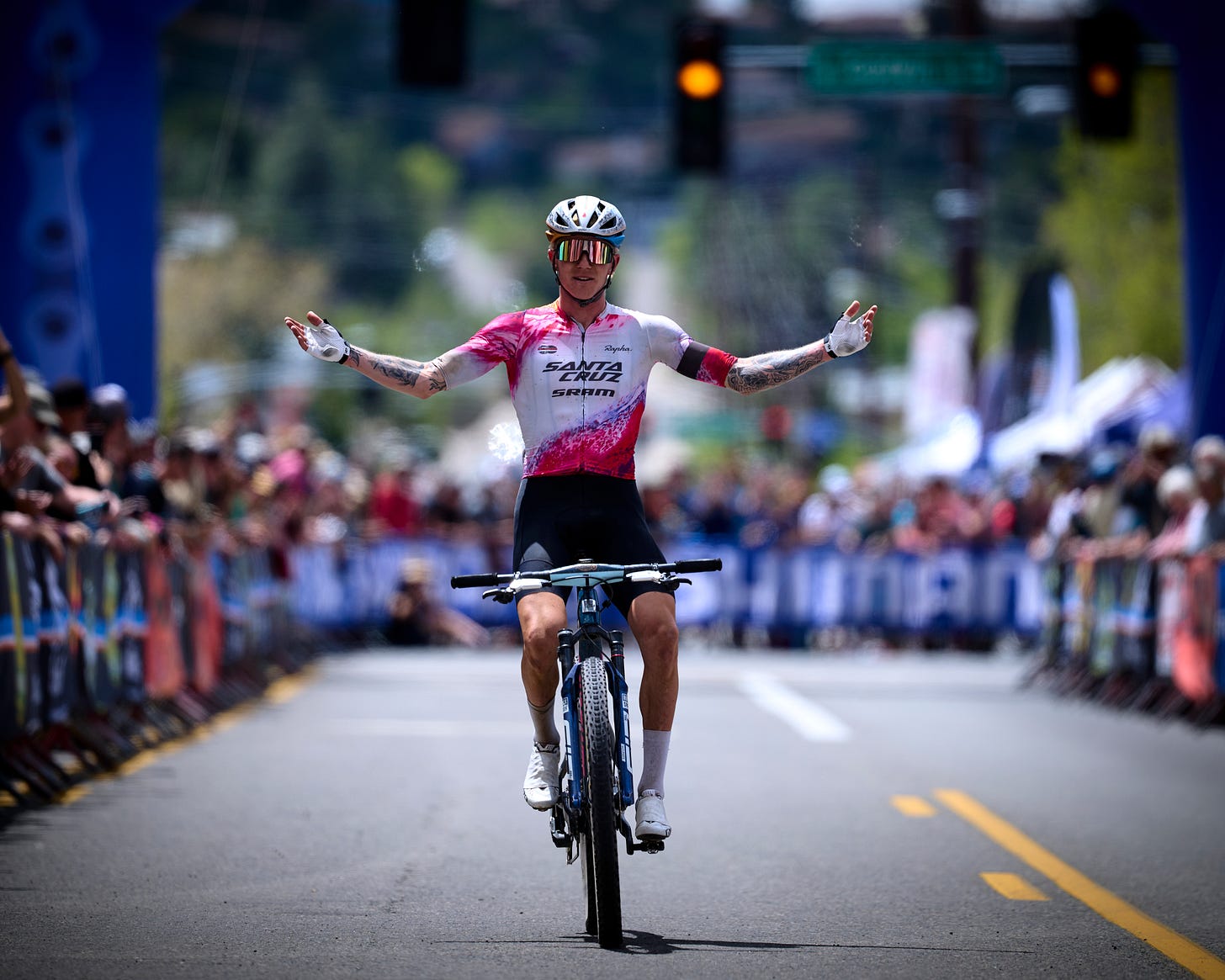
Women's Field
Fifteen minutes after the men started, it was the women's turn. Like the men, the traditional neutral lap pace was thrown out the window with money on the line. Alexis Skarda (Santa Cruz, SRAM HtSQD), Deanna Mayles (SRAM Rockshox, Orange Seal, Kenda) and Erin Osborne (Momentum Endurance, Tandem Tutoring) separated from the pack on the final 100 meters of the QOM climb. Osborne proved to be the strongest of the trio, taking an inside line in the final meters to take the $1000 prize by a bike length and lead the field into the woods.
Once the pace settled in, a front group formed with Samara Shepherd (Orange Seal, Specialized, Velocio), Skarda, Mayles, Osborne and Hannah Otto (Pivot Cycles, DT Swiss) at the front.

Mayles and Osborne dropped off the pace, and Shepherd suffered a flat tire that took her out of contention. That left Otto and Skarda to battle it out. The duo raced hard and tactically for the final third of the race. Within five miles of the finish, the pair sprinted towards the entrance to the final stretch of singletrack, where both riders thought they could gain an advantage if they entered first. Skarda tried to come around Otto to lead into the singletrack, but Otto refused to give any ground. The two came together, and both hit the dirt.
In a meaningful episode of two fierce competitors who still consider sportsmanship over everything else, they put racing aside to ensure the other was okay. As Otto recounts on her Instagram page, she told Skarda, "Let's pretend that didn't happen." Skarda agreed and told Otto they just needed to finish safely.
But that didn't mean they weren't going to race. Once back on their bikes and ready to resume the battle, Otto and Skarda fought every inch of the final few miles, trying to drop the other. When they realized that would not happen, the race became tactical as a sprint was looking to be inevitable.
Otto led into town with Skarda on her wheel. The finishing approach includes a long, gentle uphill followed by a hard left turn and an all-out sprint for home. Skarda came around Otto just as they entered the final corner and turned on the jets. Otto grabbed Skarda's rear wheel and emptied the tank but could not make the pass as Skarda took the win.
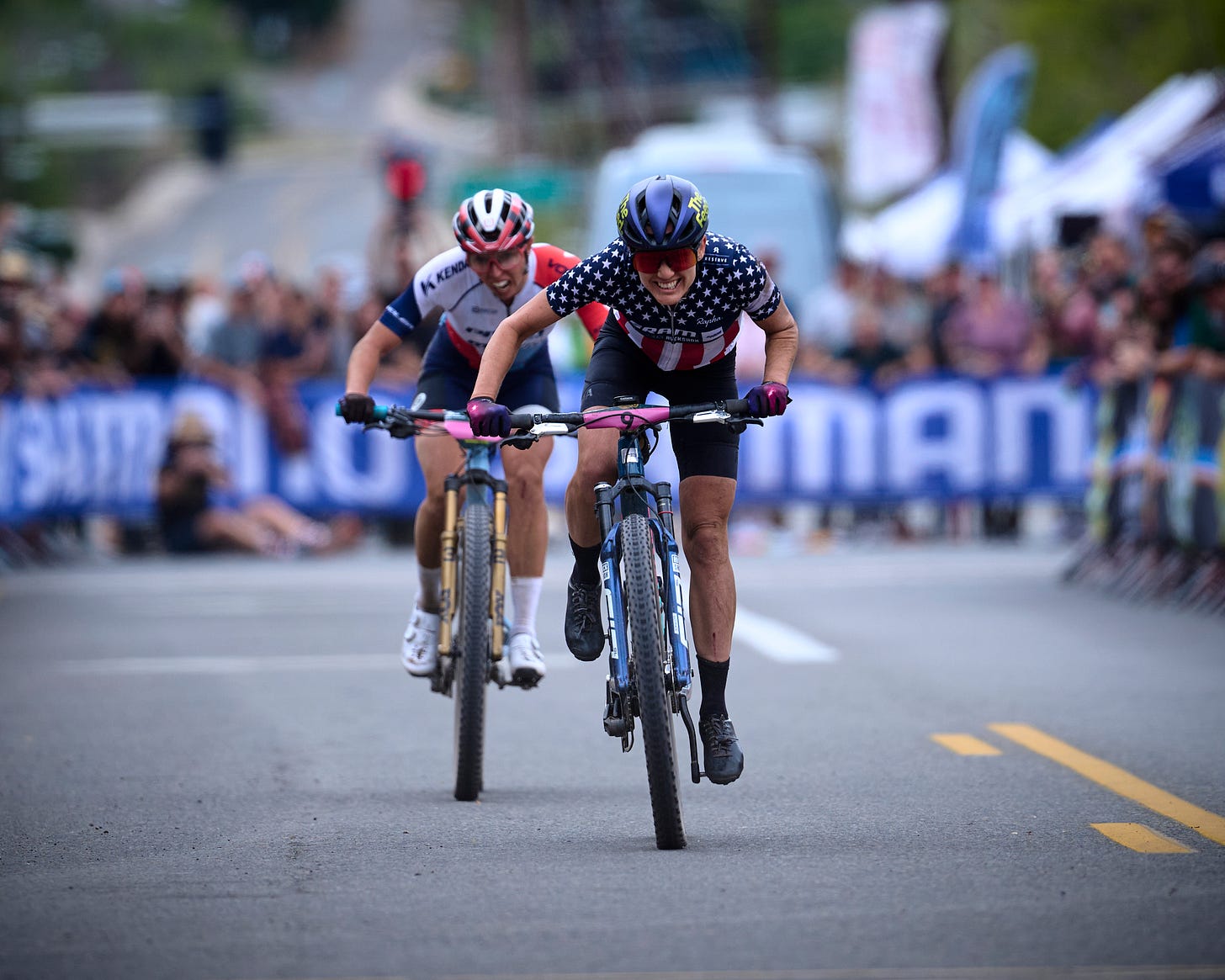
Osborne finished third, Mayles was fourth, and Michaela Thompson (Orange Seal, Voler) finished fifth.
Full results for the Whiskey Off-Road are here.
[1] While passing us at our photo location after the KOM, Ortenblad was kind enough to let us know that he needs to reconsider how to reply when Keegan says he has a plan because this one was clearly above his pay grade.







Curious how the Stars and Stripes jerseys work. Obviously it’s not the XCO style winner. Is this a specific type of mtb?